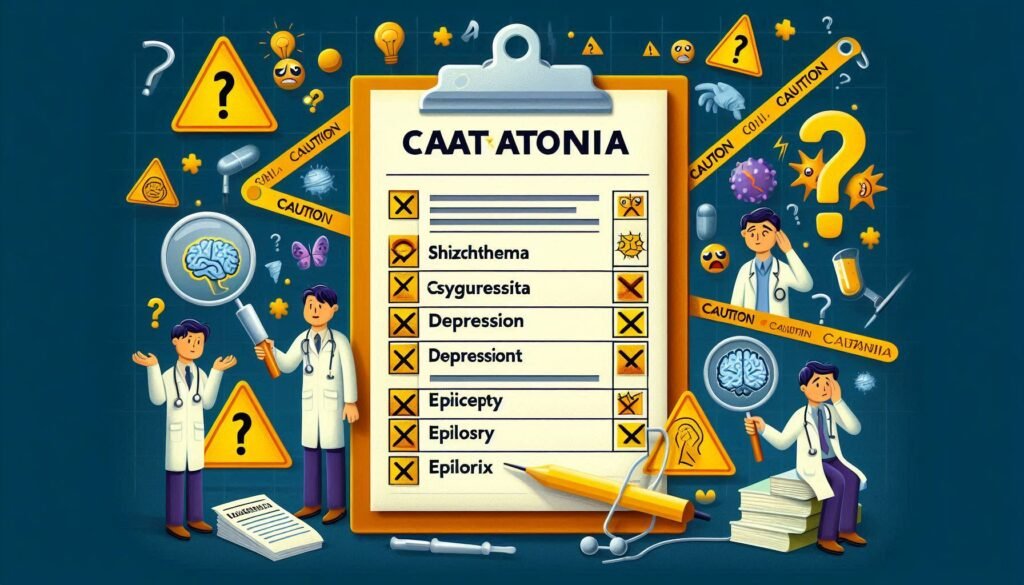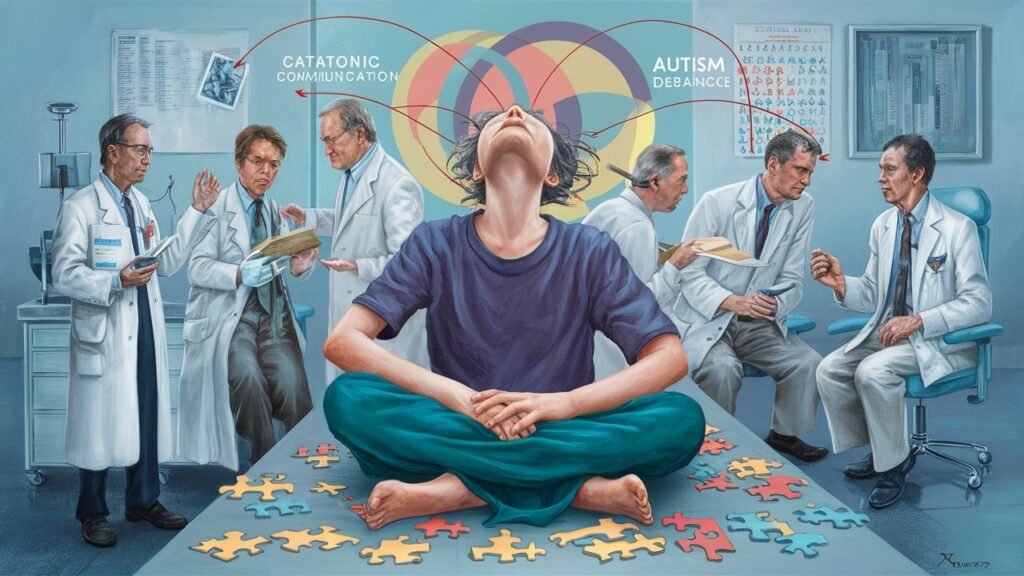Catatonia is a complex psychiatric condition that can significantly impair an individual’s quality of life. Understanding its dynamic nature requires more than a snapshot in time; it demands a comprehensive, longitudinal approach to assessment. Tracking symptom changes over weeks, months, and even years allows healthcare providers to tailor treatments effectively and enhance patient outcomes.
In this blog post, we will explore various strategies for implementing effective longitudinal assessments in catatonia management. From establishing robust baseline measurements to utilizing innovative digital tools for tracking fluctuations, each strategy plays a crucial role in navigating the challenges of this multifaceted disorder. Join us as we chart the course through the intricate landscape of catatonia care and learn how consistent monitoring can lead to better understanding and treatment options.

The Importance of Longitudinal Monitoring in Catatonia Management
Longitudinal monitoring is vital in catatonia management. This condition often presents with variable symptoms that can fluctuate dramatically over time. Capturing these changes provides a clearer picture of the patient’s experience, allowing for more informed treatment decisions.
Regular assessments enable clinicians to identify patterns and triggers associated with symptom exacerbation or improvement. Understanding how individual symptoms manifest over time allows for personalized interventions tailored to each patient’s unique journey.
Moreover, longitudinal data helps evaluate the effectiveness of various treatments. By analyzing responses across multiple episodes, healthcare providers can determine what strategies yield the best outcomes and adjust plans accordingly.
Frequent monitoring also fosters a collaborative relationship between patients and caregivers. Engaging patients in their care encourages adherence to treatment and empowers them to communicate their needs effectively, ultimately enhancing overall wellbeing in managing catatonia.
Establishing Baseline: Initial Comprehensive Assessment Techniques
Establishing a baseline is crucial in managing catatonia effectively. It provides a snapshot of the patient’s initial state, serving as a reference point for future assessments. Comprehensive assessment techniques are essential to capture this information accurately.
Begin with detailed clinical interviews that explore the patient’s history and current symptoms. This includes understanding triggers, duration, and any previous treatments that have been attempted. Gathering this qualitative data enriches the overall picture of their condition.
Incorporating standardized rating scales can enhance objectivity in assessing symptom severity. Tools like the Bush-Francis Catatonia Rating Scale offer structured criteria to evaluate various aspects of catatonia systematically.
Physical examinations should not be overlooked either; these help identify any co-occurring medical issues affecting treatment outcomes. Blood tests or imaging might also play a role, ensuring all potential factors are considered right from the outset.
Choosing Appropriate Longitudinal Assessment Tools for Catatonia
Selecting the right longitudinal assessment tools is crucial for effective tracking of catatonia symptom changes. Various instruments exist, each designed to capture specific aspects of catatonic behavior and response to treatment. Clinicians must consider the nuances of each tool in relation to their patient population.
Standardized rating scales, like the Bush-Francis Catatonia Rating Scale (BFCRS) or the Modified Rogers Scale, can provide structured data on symptom severity over time. These scales allow for consistent measurement across multiple assessments, which enhances comparability and reliability.
In addition to traditional rating scales, qualitative measures can complement quantitative data. Patient self-reports or caregiver observations may uncover subtler shifts in symptoms that standardized tools might miss.
A combination of quantitative and qualitative approaches will yield a more comprehensive picture. This multi-faceted strategy facilitates better-informed treatment decisions tailored to individual needs throughout the course of care.
Frequency and Timing: Optimizing Follow-up Schedules in Catatonia Care
Frequency and timing of follow-up appointments play a pivotal role in managing catatonia. Regular monitoring ensures that healthcare providers can promptly identify changes in symptoms, adjusting treatment as necessary. The goal is to strike the right balance between being proactive without overwhelming patients or their families.
Establishing an initial schedule based on the severity of symptoms helps set expectations for both clinicians and patients. Patients experiencing acute episodes may benefit from more frequent assessments, while those in stable phases might require less intensive monitoring.
Timing is also critical when it comes to interventions. Aligning follow-ups with medication adjustments or therapy sessions enhances continuity of care and allows for immediate feedback on treatment efficacy.
Flexibility should be built into scheduling practices. As symptom patterns evolve, adapting the frequency of visits not only provides valuable insights but also fosters a supportive environment where patients feel comfortable discussing fluctuations in their condition.
Tracking Symptom Fluctuations: Methods for Capturing Catatonic Variability
Tracking symptom fluctuations in catatonia is essential for effective management. Clinicians often employ daily self-reports from patients to monitor these changes. This method allows individuals to express their experiences, capturing the nuances of symptoms that might otherwise go unnoticed.
Another valuable approach is utilizing standardized rating scales specifically designed for catatonia. These scales provide a structured way to quantify symptoms and track their progression over time. Regular assessments using these tools can highlight shifts in severity or frequency.
Observing behaviors through video recordings can also enrich understanding. Visual documentation captures moments of catatonia that may not be present during clinical evaluations, providing deeper insights into symptom variability.
Incorporating caregiver observations offers additional perspectives on fluctuating symptoms. Caregivers often notice subtle changes in behavior or mood that contribute significantly to the overall picture of a patient’s condition, making them invaluable partners in monitoring progress.
Integrating Multiple Data Sources in Long-term Catatonia Assessment
Integrating multiple data sources is vital for a comprehensive understanding of catatonia. Traditional assessments often rely solely on clinical evaluations, which may not capture the full picture of symptom variability. By incorporating patient-reported outcomes and caregiver observations, clinicians can gain insights that standard measurements might miss.
Utilizing electronic health records is another powerful strategy. These systems consolidate information from various healthcare providers, allowing for a more holistic view of the patient’s history and treatment response over time. Combining these records with standardized assessment tools creates a richer dataset.
Moreover, qualitative data adds depth to quantitative findings. Interviews or focus groups can reveal personal experiences and triggers related to catatonic symptoms, facilitating tailored interventions.
Incorporating diverse methodologies enhances reliability and validity in long-term assessments. This multifaceted approach ensures that all aspects of the patient’s experience are considered when tracking changes in symptoms and developing effective management strategies.
Technology-Assisted Monitoring: Digital Tools for Continuous Catatonia Tracking
Technology is revolutionizing how we monitor catatonia. Digital tools offer continuous tracking of symptoms, providing real-time insights into patient conditions. These solutions can enhance communication between patients and healthcare providers, facilitating timely interventions.
Mobile apps designed for mental health monitoring allow patients to report their experiences easily. They can log symptom severity, duration, and triggers on a daily basis. This immediate feedback helps create a clearer picture of the patient’s state over time.
Wearable devices also play a significant role in technology-assisted monitoring. These gadgets track physiological parameters such as heart rate and activity levels, offering additional data points that are crucial for understanding fluctuations in catatonic symptoms.
Moreover, telehealth platforms enable remote consultations with specialists who can analyze this collected data efficiently. By integrating these advanced technologies into treatment plans, clinicians can make informed decisions based on comprehensive evidence rather than relying solely on periodic assessments.
Challenges in Long-term Assessment: Addressing Adherence and Data Quality
Long-term assessment of catatonia presents unique challenges, particularly regarding adherence and data quality. Patients often struggle to consistently engage with monitoring protocols. This inconsistency can lead to gaps in critical data that may hinder effective treatment.
Moreover, the subjective nature of symptom reporting complicates matters further. Variability in patients’ self-assessments can introduce bias and inaccuracies into the collected data. Clinicians must navigate these discrepancies carefully.
Environmental factors also play a significant role in adherence levels. Stressors such as housing instability or lack of social support may affect a patient’s ability to participate fully in longitudinal assessments. Addressing these socio-economic barriers is essential for improving compliance.
Technological solutions offer promise but come with their own set of challenges. If tools are not user-friendly or accessible, patients might disengage entirely from the tracking process, undermining the effectiveness of any longitudinal strategy implemented.
Interpreting Longitudinal Data: Identifying Patterns and Predicting Outcomes
Interpreting longitudinal data in catatonia management can reveal crucial insights into symptom trajectories. By analyzing patterns over time, clinicians can identify fluctuations in severity and frequency of symptoms, enabling a more nuanced understanding of each patient’s condition.
A key aspect is recognizing trends that may indicate responses to treatment or the emergence of new symptoms. For instance, consistent improvement in motor activity could suggest an effective intervention while persistent rigidity might signal the need for adjustments in care strategies.
Predicting outcomes becomes feasible when these patterns are well understood. Clinicians can anticipate potential relapses or stabilization periods based on historical data points. This proactive approach allows for timely interventions that could prevent worsening conditions.
Moreover, integrating patient feedback into this analysis enhances accuracy. Subjective reports from patients provide context that raw data alone cannot capture, leading to more personalized and effective treatment plans tailored to individual needs.
From Assessment to Action: Using Longitudinal Data to Guide Treatment Decisions
Longitudinal assessment strategies for tracking catatonia symptom changes are essential for effective management and treatment. By continuously monitoring patients, healthcare professionals can gain insights into the progression of symptoms and identify triggers or patterns that may influence treatment outcomes.
Utilizing data from regular assessments empowers clinicians to make informed decisions. These insights allow for timely adjustments in therapeutic approaches, whether it’s medication modifications or introducing new interventions. Understanding how a patient’s symptoms fluctuate over time also fosters better communication between providers and families, enhancing care coordination.
Moreover, integrating various data sources—such as clinical observations, patient self-reports, and technological tools—can create a comprehensive view of each individual’s experience with catatonia. This multi-faceted approach not only aids in tailoring personalized treatment plans but also supports ongoing evaluation of their effectiveness.
Adopting longitudinal assessment strategies enhances the potential to improve patient outcomes significantly. Tracking symptom changes leads to more responsive care tailored specifically to individuals’ needs, ultimately promoting recovery and well-being in those affected by catatonia.


